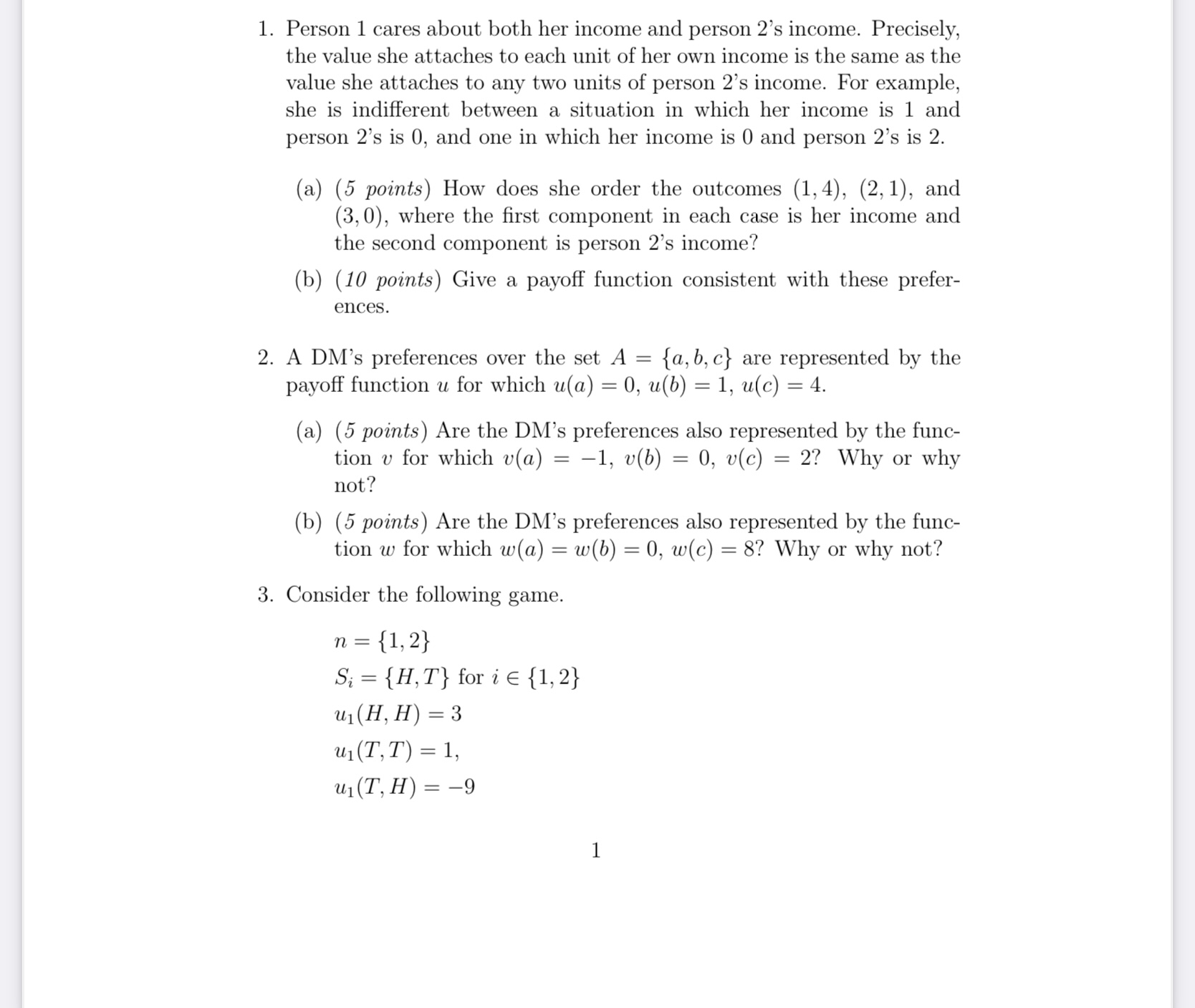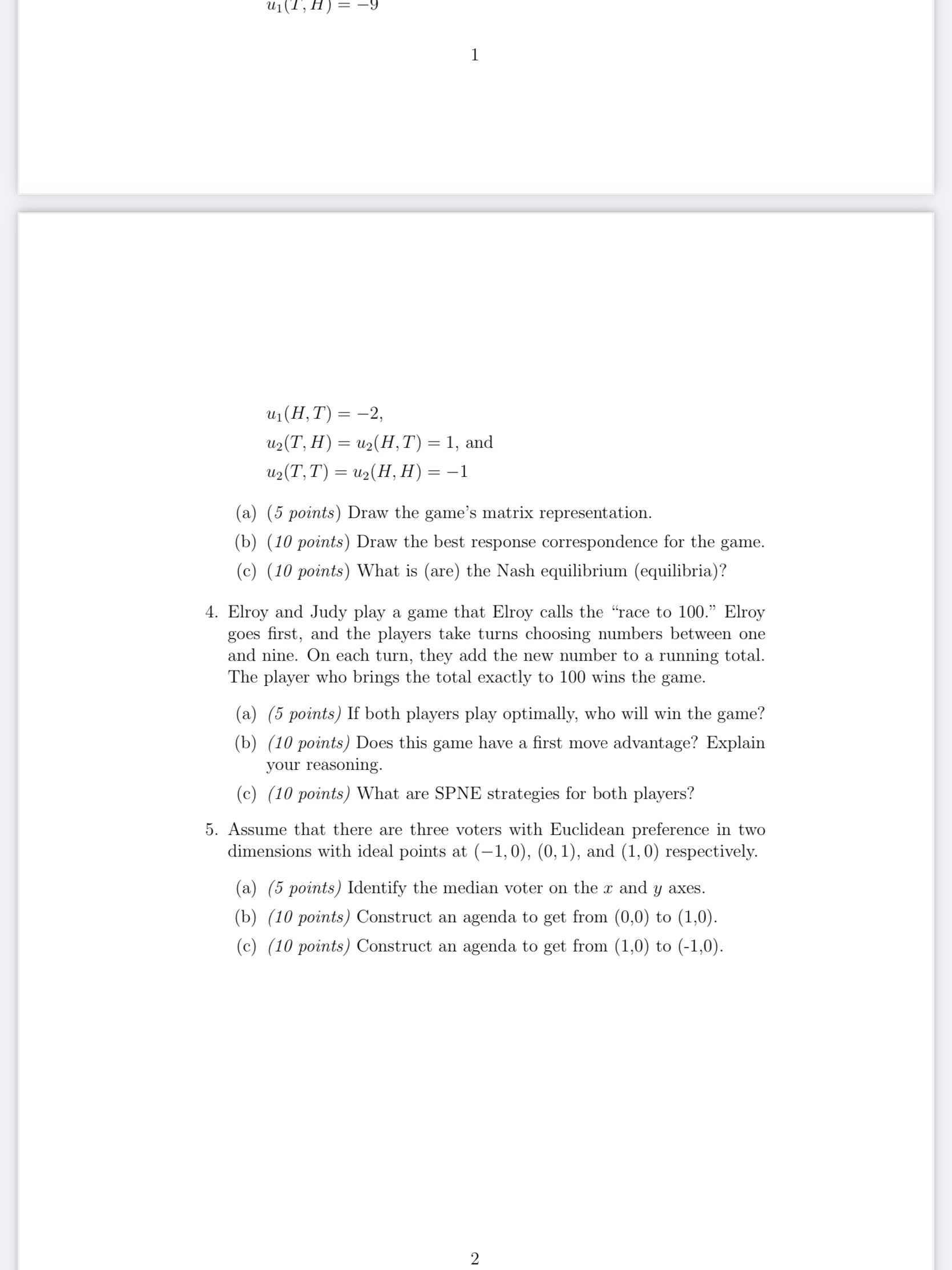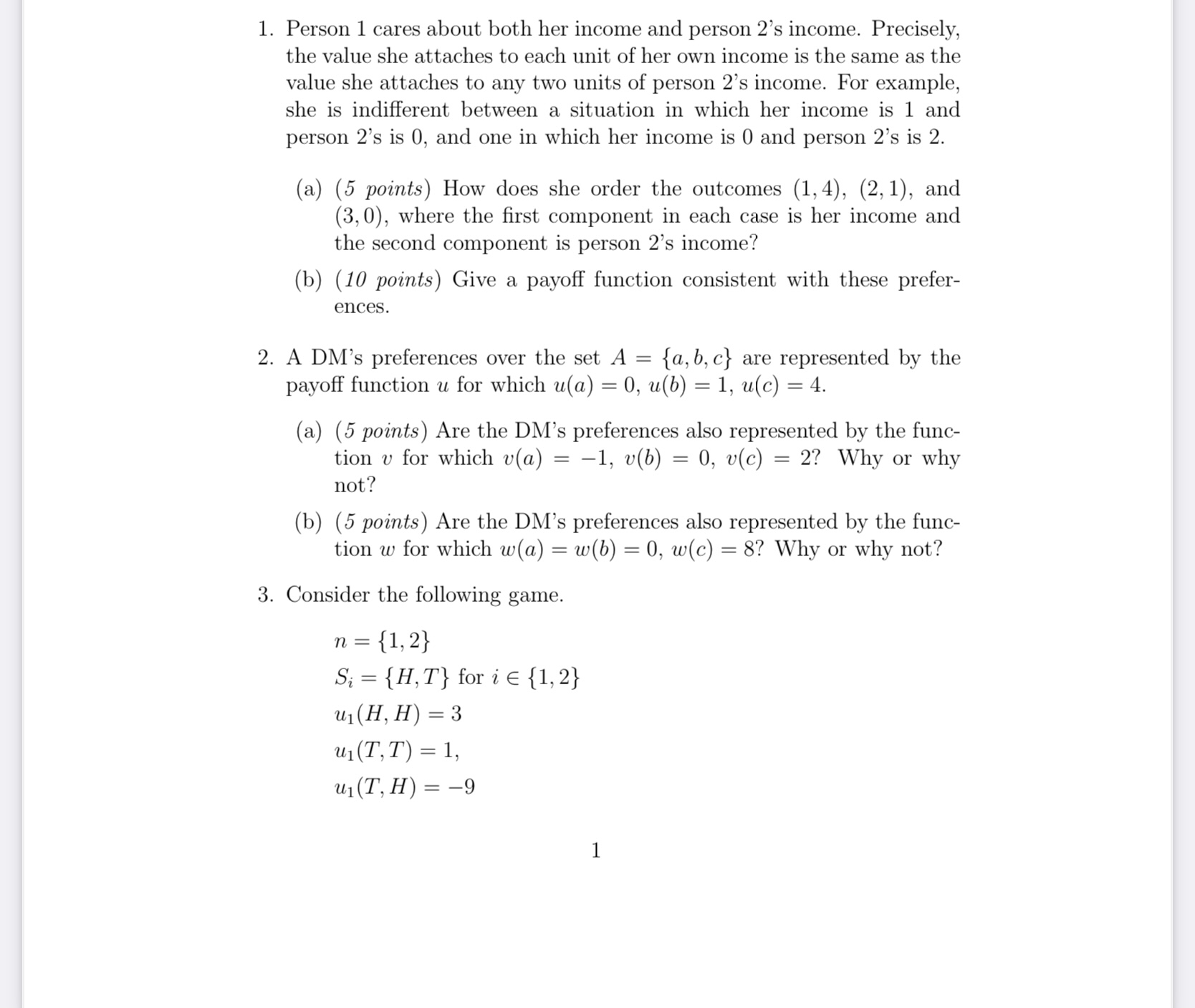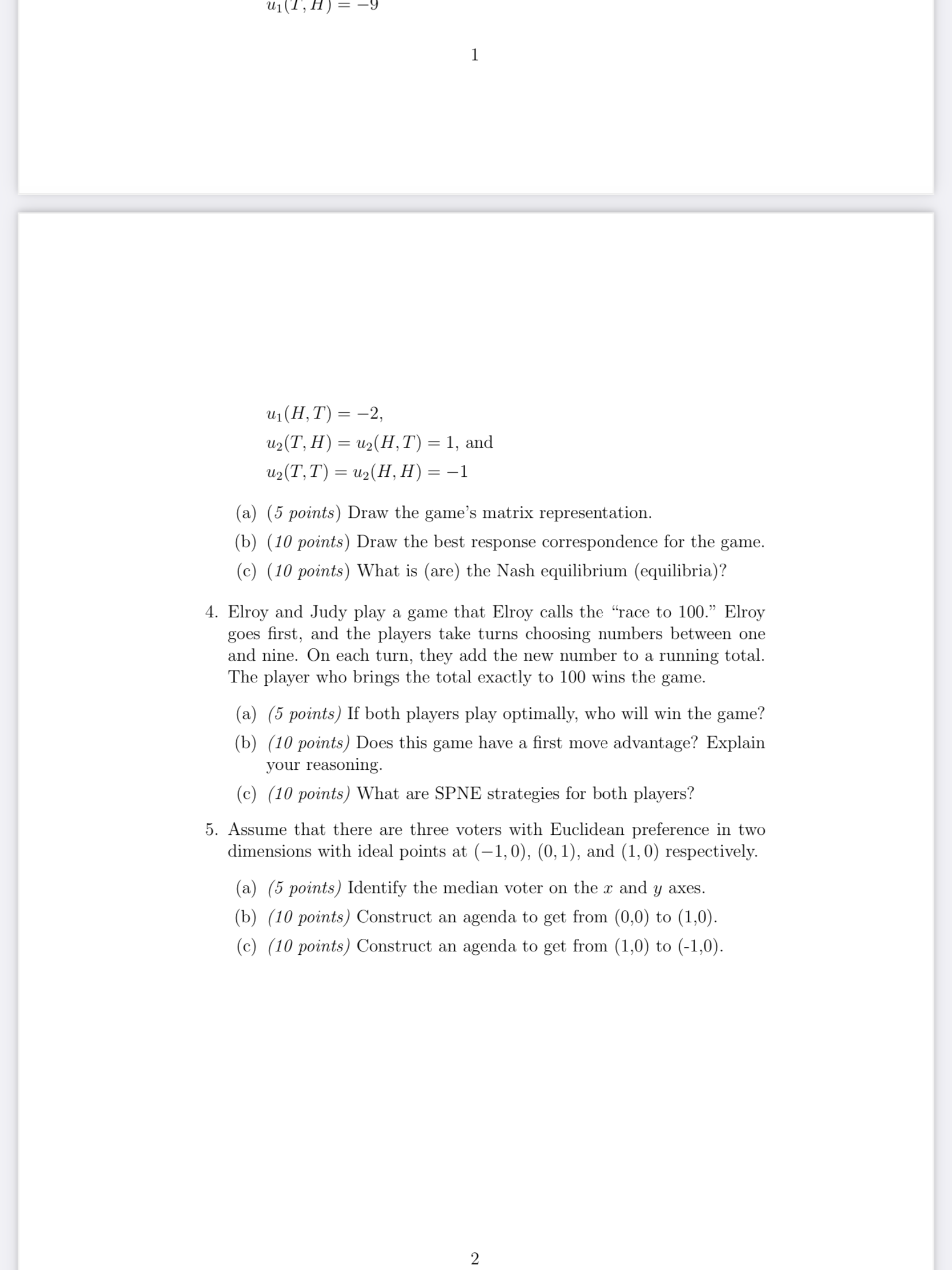Question
1. Person 1 cares about both her income and person 2's income. Precisely, the value she attaches to each unit of her own income is


1. Person 1 cares about both her income and person 2's income. Precisely, the value she attaches to each unit of her own income is the same as the value she attaches to any two units of person 2's income. For example, she is indifferent between a situation in which her income is 1 and person 2's is 0, and one in which her income is 0 and person 2's is 2. (a) (5 points) How does she order the outcomes (1, 4), (2, 1), and (3, 0), where the first component in each case is her income and the second component is person 2's income? (b) (10 points) Give a payoff function consistent with these preferences.
2. A DM's preferences over the set A = {a, b, c} are represented by the payoff function u for which u(a) = 0, u(b) = 1, u(c) = 4.
(a) (5 points) Are the DM's preferences also represented by the function v for which v(a) = ?1, v(b) = 0, v(c) = 2? Why or why not?
(b) (5 points) Are the DM's preferences also represented by the function w for which w(a) = w(b) = 0, w(c) = 8? Why or why not?


Step by Step Solution
There are 3 Steps involved in it
Step: 1

Get Instant Access to Expert-Tailored Solutions
See step-by-step solutions with expert insights and AI powered tools for academic success
Step: 2

Step: 3

Ace Your Homework with AI
Get the answers you need in no time with our AI-driven, step-by-step assistance
Get Started


